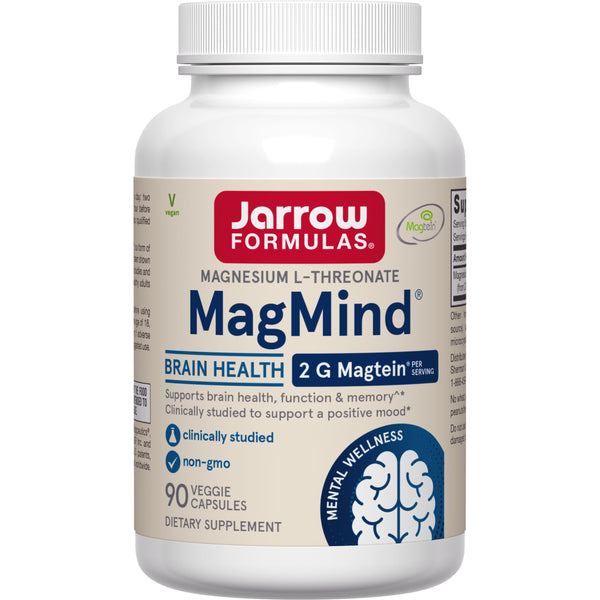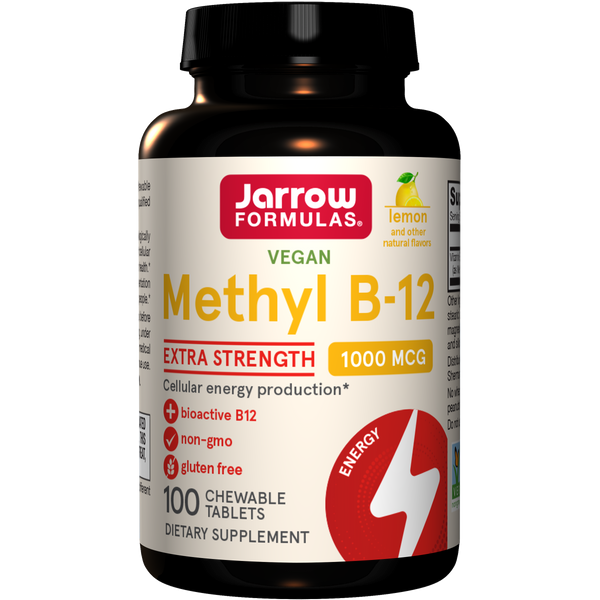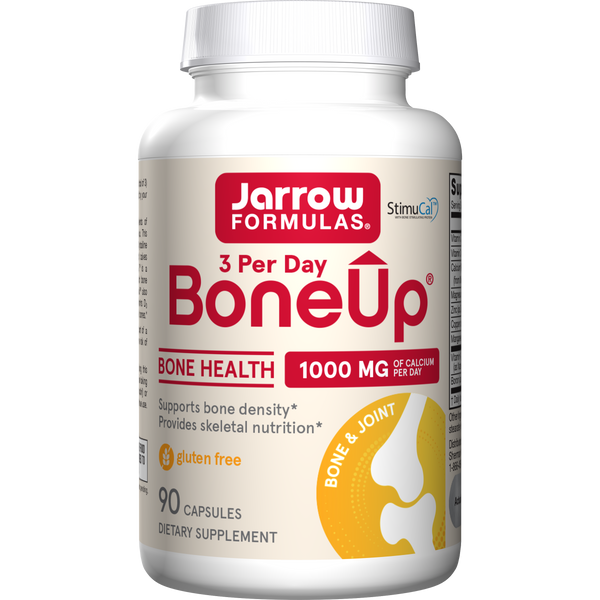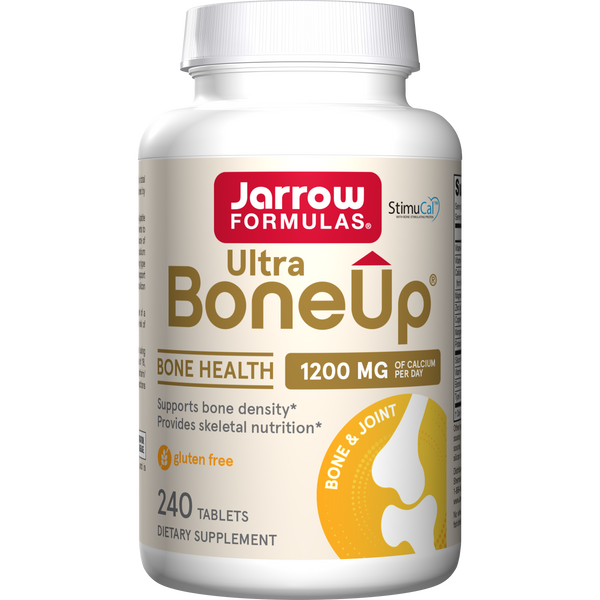Exploring Magnesium's Role in Bone Health
By Thomas A. Bowman, PhD
A recent article on jarrow.com highlighted a study1 that found both American smokers and nonsmokers had significant deficits in several minerals and vitamins based on a detailed review of their diets. One of the most profound mineral deficits was magnesium. 77% of nonsmokers and 88% of smokers do not get the adequate daily intake of magnesium. Now another research group reports in a large prospective study2 of American men and women that higher magnesium intake "was associated with a significant reduction in fracture risk over 8 years of follow-up."
Magnesium Function
Most Americans get both their magnesium and calcium from dietary sources, such as milk, bananas, coffee and orange juice.3 Magnesium is the seventh most abundant mineral in the human body. Most magnesium in the body is in bone. Virtually all cells in the body contain magnesium.
Magnesium is a major positively charged ion inside cells where it binds other molecules. Intracellular magnesium most commonly binds the active form of ATP. From its role as a binding partner for ATP, magnesium is essential for cellular energy processes, including movement and signaling in the body. Magnesium regulates the transport of other ions across membranes, including calcium and potassium, affecting the balance of these additional intracellular ions. Magnesium also activates many other essential intracellular enzymes involved in the synthesis of proteins, carbohydrates, lipids and nucleic acids.
Current research on magnesium primarily focuses on its support of metabolic, cardiovascular, neurological, and brain function. Nerve and muscle function depend profoundly on magnesium, which is why many take magnesium to relieve leg cramps, weakness, nausea, and fatigue. Magnesium has a calming effect on nerve transmission by regulating ion movements. Additionally, since magnesium regulates calcium uptake, low magnesium levels can allow more calcium to accumulate in blood vessel walls. Since magnesium promotes calcium uptake, magnesium supports a healthy cardiovascular system.
Magnesium in Bone
Most magnesium is in mineral deposits in the bone matrix. In the bone matrix, magnesium balances the mineral composition of the bone, which leads to increased bone density. As in the aforementioned prospective American study,2 higher levels of magnesium intake independently correlate with higher bone density and fewer fractures. Moreover, those with the lowest magnesium intake have the lowest bone density and most fractures.
Without magnesium, bone becomes less dense and more brittle, because magnesium with ATP stabilizes the smaller calcium phosphate molecules in the bone matrix.4 With decreased magnesium, the smaller calcium phosphates dissolve with the formation of larger hydroxyapatite crystals.5 Bone with lower density has lower levels of magnesium and larger crystals.*6 Magnesium is important in synthesizing and activating Vitamin D and parathyroid hormone, which both regulate bone mineral balance.
This large prospective American study evaluated both men and women. Researchers evaluated 3,765 American participants over 8 years. They stratified data into quintiles by sex and adjusted the statistical associations for fourteen potential confounders. Both men and women with higher magnesium intake had fewer fractures and higher bone density.2
Magnesium Effects Calcium and Vitamin D
Although very high levels of magnesium without calcium theoretically could interfere with new bone formation,7 in clinical studies, intake of magnesium increased the bioavailability of other nutrients, including calcium and Vitamin D.8 Conversely, high intake of calcium and Vitamin D with low magnesium intake tends to further compromise bone magnesium content.8
At the expense of the tissues, including bone, blood magnesium level remains constant even with very low intake of magnesium.8 Less than 1% of all magnesium in the body is present in the blood. Hence, patient evaluations of magnesium blood levels do not give a complete picture of magnesium status, since blood magnesium levels can appear normal even in magnesium deficient states.
Studies have found that patients with low levels of Vitamin D were not able to improve their Vitamin D status with supplementation when magnesium intake was also low.8 High magnesium intakes increase the bioavailability of Vitamin D by increasing synthesis of the active form of Vitamin D, and by increasing binding and uptake of Vitamin D.
Magnesium Recommendations
The recommended ratio of intake of calcium to magnesium is optimal at approximately 2:1.8 Higher calcium intake requires also higher magnesium intake in order to balance the bone mineral content. As noted before, low magnesium levels can allow more calcium to accumulate in blood vessel walls. Magnesium regulation of Vitamin D and parathyroid hormone is the mechanism of this effect.
In conclusion, magnesium in a recent study correlated inversely with fracture risk. In light of the excellent importance of magnesium in a huge range of physiology, magnesium deserves careful consideration when formulating a plan for diet and supplementation. This is especially imperative in that the vast majority of Americans currently have a poignantly inadequate intake of magnesium.
- Raatz SK, Jahns L, Johnson LK, et al. Smokers report lower intake of key nutrients than nonsmokers, yet both fall short of meeting recommended intakes. Nutrition Research. 2017;45:30-37.
- Veronese N, Stubbs B, Solmi M, et al. Dietary magnesium intake and fracture risk: data from a large prospective study. British Journal of Nutrition. 2017;117(11):1570-1576.
- Tucker KL, Hannan MT, Chen H, Cupples LA, Wilson PW, Kiel DP. Potassium, magnesium, and fruit and vegetable intakes are associated with greater bone mineral density in elderly men and women. The American journal of clinical nutrition. 1999;69(4):727-736.
- Blumenthal N, Betts F, Posner A. Stabilization of amorphous calcium phosphate by Mg and ATP. Calcified tissue international. 1977;23(1):245-250.
- Bigi A, Foresti E, Gregorini R, Ripamonti A, Roveri N, Shah J. The role of magnesium on the structure of biological apatites. Calcified tissue international. 1992;50(5):439-444.
- Cohen L, Kitzes R. Infrared spectroscopy and magnesium content of bone mineral in osteoporotic women. Israel journal of medical sciences. 1981;17(12):1123-1125.
- Tsao Y-T, Shih Y-Y, Liu Y-A, Liu Y-S, Lee OK. Knockdown of SLC41A1 magnesium transporter promotes mineralization and attenuates magnesium inhibition during osteogenesis of mesenchymal stromal cells. Stem cell research & therapy. 2017;8(1):39.
- Rosanoff A, Dai Q, Shapses SA. Essential Nutrient Interactions: Does Low or Suboptimal Magnesium Status Interact with Vitamin D and/or Calcium Status? Advances in Nutrition: An International Review Journal. 2016;7(1):25-43.




























